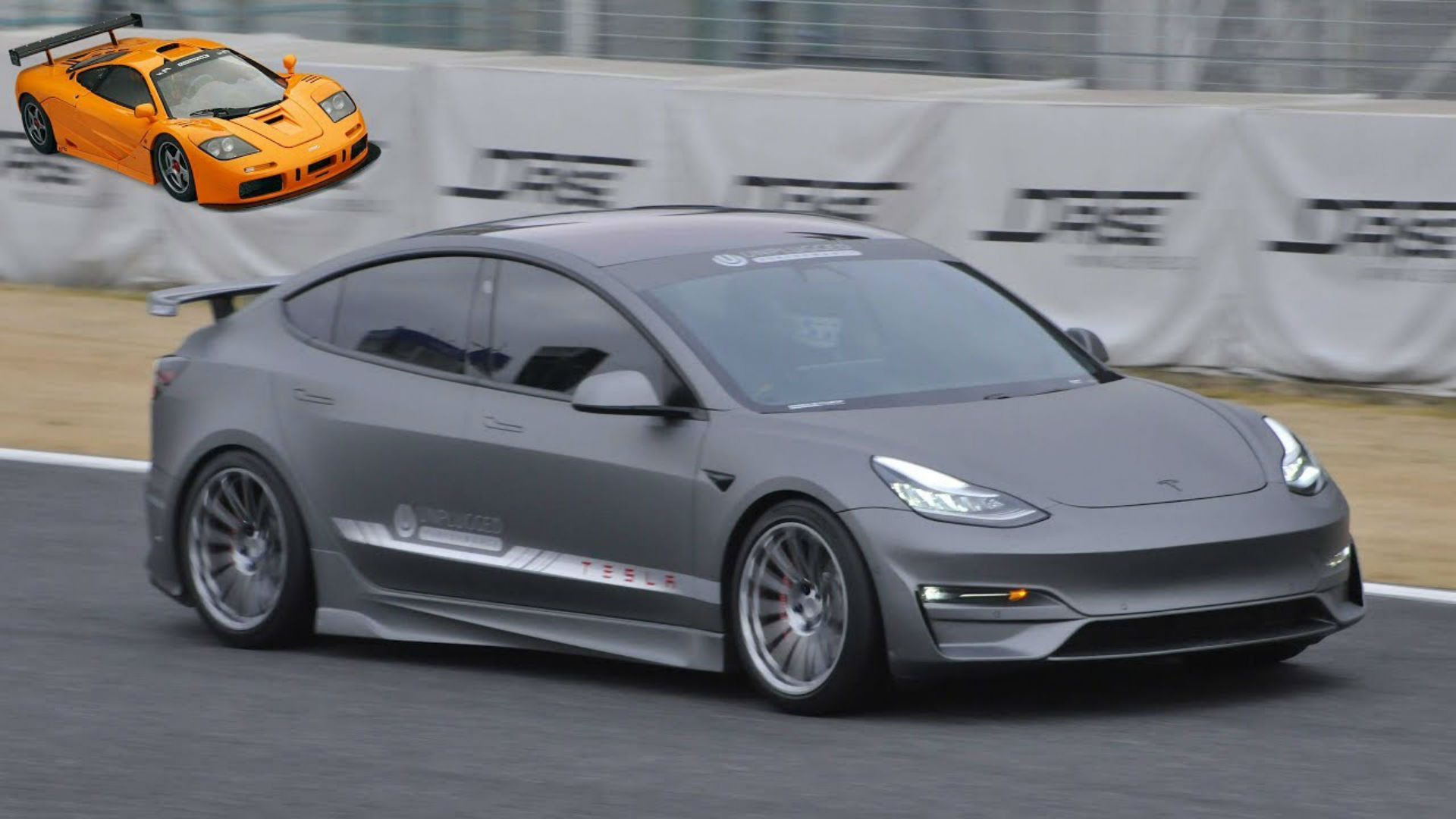

It’s a great achievement for a car to be in any way comparable to the vaunted McLaren F1, arguably still the greatest road car ever made some two decades later. That’s why it’s important that the F1’s time recorded around Tsukuba Circuit in Japan was almost equaled by a car from the 21st century, one that cost less than a hundredth what you’d pay for an F1 today and runs on pure electricity. That car? A heavily modified Tesla Model 3.
Said Tesla is the property of American YouTuber Erik Strait, who posts under the name DÆrik. Strait tossed practically the entire catalog of Tesla specialist Unplugged Performance at his Model 3. It features fully adjustable suspension, carbon-ceramic brakes, functional carbon fiber aero elements, and 20-inch forged wheels wrapped in 305-section Michelin Pilot Sport Cup 2 tires—factory equipment on the Porsche 918 Spyder.

Eager to pit his Model 3 against some of the world’s premier racetracks, Strait collaborated with a Japanese Tesla club to send his car to Tsukuba Circuit, where the Tesla ran about 20 laps on Jan. 22. On that date, a non-pro driver familiar with Tsukuba braved slick conditions to clock a lap time of 1:04.730 in the modified EV. As Strait points out, that’s scarcely a tenth off the 1:04.62 recorded by a McLaren F1 in a December 1994 episode of Best Motoring. Said lap can be found at 15:30 into the video below.

As impressive as it is that a Tesla almost matched this mighty McLaren in a one-lap showdown around Tsukuba, it’s hard to extrapolate much meaning from either lap time. Yes, the Tesla was captained in rainy conditions by a driver who didn’t have much experience with the car, while the McLaren was driven by 1991 24 Hours of Spa winner Naoki Hattori. But we must consider the advantages this Tesla enjoyed, namely its modern high-performance tires and excellent low-end power delivery as an EV, perfect for launching out of Tsukuba’s numerous low-speed corners.
By comparison, the F1’s long first gear—whose redline lies beyond 80 miles per hour—is ill-suited to Tsukuba which, on the day of the McLaren’s lap, had a hotter 74-degree ambient temperature and an equally slick surface (note the glistening tarmac and 92 percent humidity). Furthermore, the driver can be seen avoiding the track’s curbs on its apexes and thus losing crucial bits of time to the Telsa.
While one shouldn’t draw hasty conclusions about the future of the auto industry from something as meaningless as a lap time, the Tesla’s performance is still an impressive mark showing just how far we’ve come in the 20-odd years since the F1 ruled the road.
Got a tip? Send us a note: tips@thedrive.com
h/t: Tesla Reporter